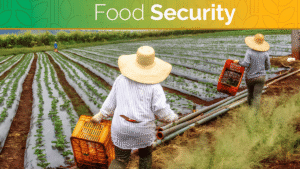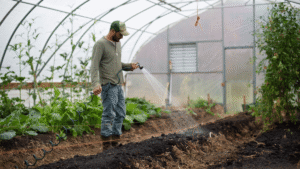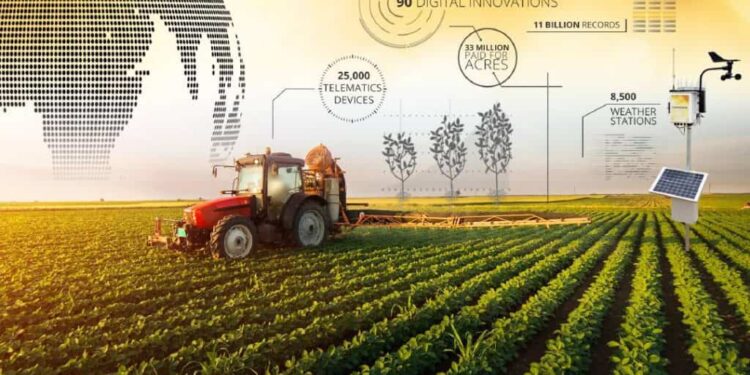Data scientists are part of virtually every major industry, and agriculture is no exception. Here are six ways data scientists bring advantages to the agricultural sector. The advancements of data scientists are making this reality possible, both now and for the foreseeable future.
Main Highlights
- Climatic Change
- Pictorial view of farms
- Data to Empower Small Farmers
1. Receiving Useful Data to Help Fight Food Scarcity
Since data scientists have tools to process and analyze gigantic amounts of data efficiently, projects are underway to determine how that information might help small-scale farmers join in the battle to solve worldwide food shortages.
In September 2018, a coalition launched a project that will run through 2030 and look at data from approximately 500 million farmers in impoverished areas from 50 countries.

The people behind the project hope the data will show whether agricultural investments in various countries are paying off and help develop policies for the farmers. On a larger scale, this project aligns with the United Nations’ Sustainable Development Goals to double the agricultural productivity and incomes of farmers in developing nations and help them reduce world hunger.
2. Managing Pests
Agricultural pests can quickly cut into a farmer’s profits. But, misusing pesticides can have adverse effects on people, plants, and other living things. Fortunately, some companies recruit data scientists to help them develop user-facing platforms that analyze when to apply pesticides and how much to use them.
One of them is a Brazilian company called Agrosmart. Its technology relies on Internet of Things (IoT) sensors and artificial intelligence to determine the kind of insects on a crop and the quantity present. Farmers then get an associated report and can use it to plan their pest management approaches. The goal is to help farmers cost-effectively control pests with a minimized environmental impact.

In another case, Saillog, an Israeli startup, developed a smartphone app called Agrio that informs farmers of the diseases currently affecting their crops or ones found on surrounding farms.
3. Investigating Agricultural Niches
Data scientists know how to use tools that identify patterns and relationships that may otherwise remain hidden. As such, they can draw conclusions that push agricultural science forward through the examination of specific factors. For example, researchers know trace minerals positively affect the metabolic functions of livestock and poultry, while carotenoids play a role in increasing egg yolk quality and nutrition.

The findings brought about by sifting through databases and studies to conclude things like these show how seemingly small factors in agricultural processes can bring about substantial changes. When animal feed brands, farmers, and others in the agriculture sector take advantage of such findings from data scientists, they could positively change their operations and get better results.
4. To Cope With Climate Change
Climate change is a looming concern that has already affected the agriculture sector. However, data scientists are hard at work figuring out ways to compensate for the shift.
One project involves giving IoT sensors to Taiwanese rice farmers so they can collect crucial information about their crops. It’ll all go into a database used to help farmers optimize their production cycles, even when climate change makes that task exceptionally challenging. Following traditional farming, the calendar is no longer sufficient because of climate change. But, data analysis could forever change the future of farming.
Scientists are also scrutinizing agricultural soil data to improve their understanding of how soil contributes to climate change by releasing greenhouse gases, as well as how soil data might aid in adapting to climate change. Collecting this kind of information is tricky, but scientists believe it could fill in knowledge gaps associated with the relationship between soil and climate change.
5. To Make Yield Predictions
A poor yield can result in a devastating season for farmers, as well as all the entities that depend on the crops. IBM has a platform that estimates corn yields two to three months in advance, reducing unpleasant surprises for agricultural professionals.
Similarly, researchers at the University of Illinois depend on seasonal forecasts and satellite data to make end-of-season predictions earlier than usual. Lab results indicate this new method is even more accurate than the U.S. Department of Agriculture’s real-time data.
6. To Provide Images of Crops and Land
Some people in the agricultural industry manage so many acres of land, it’s impossible to get prompt updates and alerts about potential problems without help from technology. Canadian company Farmers Edge takes daily satellite images of farms and combines them with other relevant data, including information from more than 4,000 connected weather stations.
Moreover, several countries, including Ireland and Ghana, depend on satellite-based crop monitoring to inspect areas more quickly than traditional methods allow.
Data scientists play an essential role in furthering the use of satellite imagery for these purposes and others. Pilot projects and new platforms could help those experts determine the methods most appropriate for tackling current and future needs within the agriculture sector.











